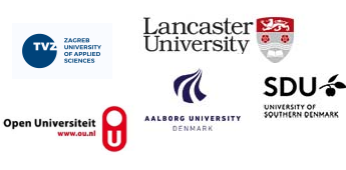

Knowledgeability and modes of identification in (dis)embodied boundary practice in networked learning.
Marianne Riis, Lone Dirckinck-Holmfeld
Metropolitan University College, København N, Denmark. Aalborg University, Aalborg, Denmark.
Keywords
networked_learning, sociocultural, sociomaterial, boundary_objects, embodiment, identity
Abstract
Building on a continued interest in boundaries and boundary practice in relation to ICT-based networked learning (Ryberg & Sinclair, 2016), this paper addresses the issue of knowledgeability and identification through (dis)embodiment in design for boundary practice in networked learning. According to Goodyear (2015) teaching is about designing opportunities for people to learn, and from a learning perspective, how participants respond to design through their practices and through their use of boundary objects is interesting. Inspired by Wenger-Trayner & Wenger-Trayner’s (2015) concepts of knowledgeability and modes of identification, we analyse how two different case studies conducted at the Danish online Master programme on ICT and Learning (MIL) differ with regard to potential boundary practice and use of boundary objects.
In study I, the design for learning was based on a 2D virtual learning environment (Dirckinck-Holmfeld, 2006), whereas the design for learning in study II was based on a 3D virtual world (Riis, 2016). Carlile (2002; 2004) proposed a hierarchical typology for boundary objects aiming at transfer, translation and transformation, and in our analysis, we identify examples of such boundary objects in the two learning arenas. Our findings show that all identified categories of boundary objects can mediate knowledge according to the typology. Nonetheless, certain boundary objects in the 3D learning arena (study II), in particular the avatar, seem to promote a different kind of embodied transformation, which has implications for identity formation of the participants. Furthermore, the 3D virtual space affords a concrete materialised, albeit virtual, opportunity for reification, which is different to that of the 2D environment.
In the paper, we will elaborate on these differences, and based on the two case studies we propose that boundaries in networked learning should not only be regarded as socio-cultural differences, but as socio-material differences and dependencies as well. In particular, the materiality of a 3D virtual arena and avatars provides new relational and performative opportunities in networked learning.
Joint Organising Institutions
Open University of The Netherlands
| Past Conference Proceedings | Contact |